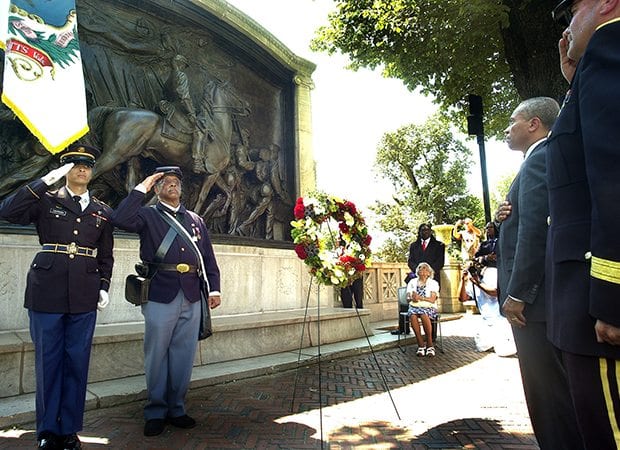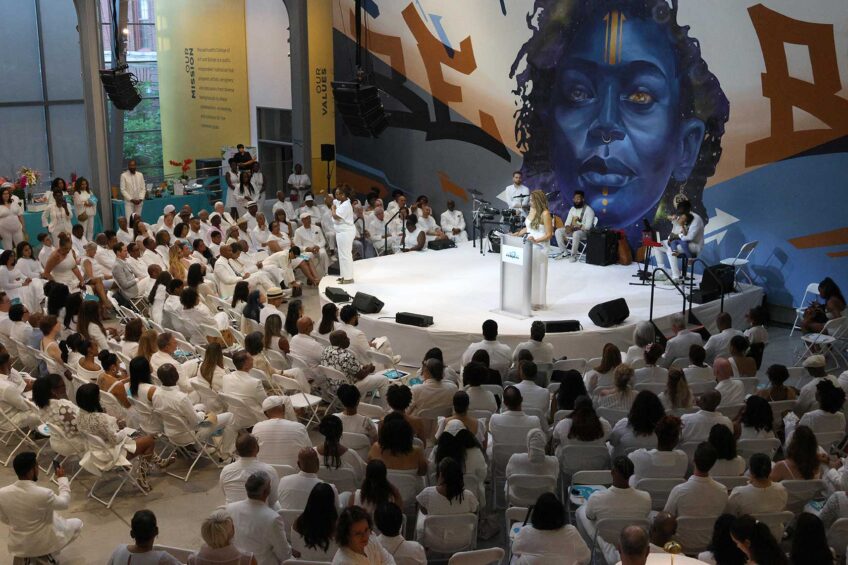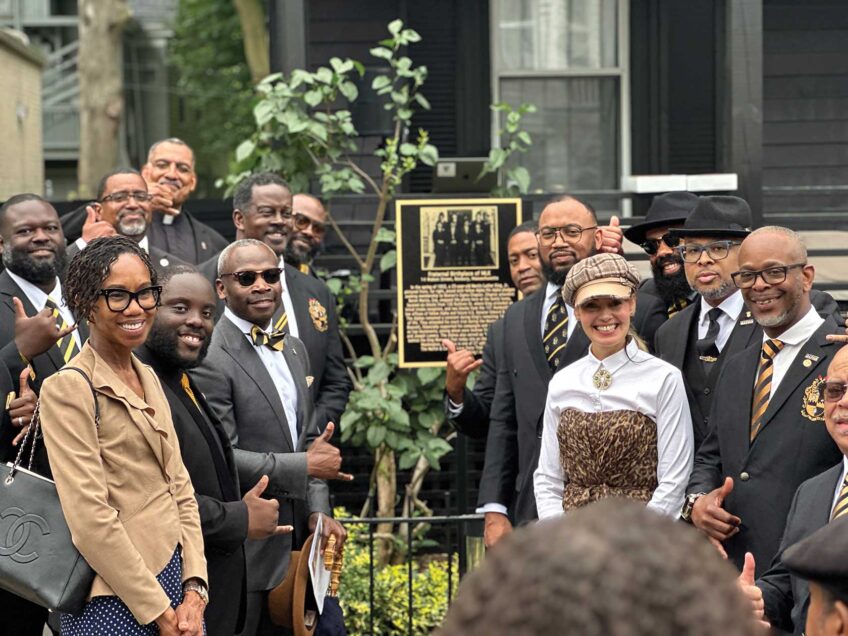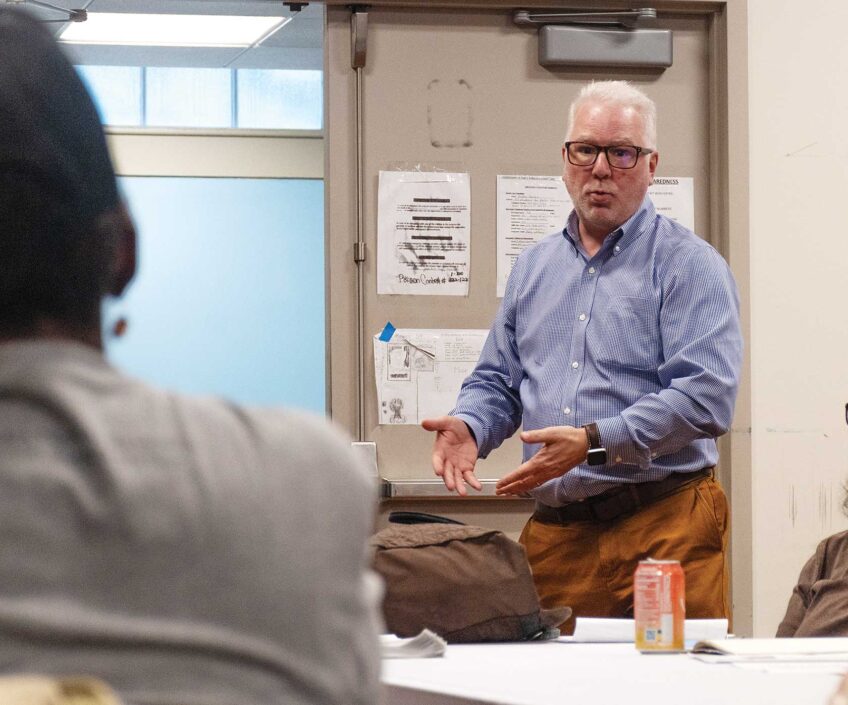
Black History
The 54th Massachusetts Volunteer Regiment, conceived in controversy, earned its laurels as the most storied black unit of the Civil War during a daring assault on a heavily fortified Confederate battery 150 years ago.
The attack was suicidal, the battle brief. When it was over, one-half of the regiment lay dead in the sand of Morris Island or in the ramparts of Fort Wagner. The commander, 26-year-old Col. Robert Gould Shaw, fell with his men, shot through the chest atop the earthen wall.
The engagement in the early evening of July 18, 1863, left no doubt about the ability of black soldiers to defend the Union cause. As a result, over 180,000 African Americans eventually fought on the side of the Stars and Stripes and turned the tide toward freedom. The battle — dramatized in the Hollywood film “Glory” — followed the victory at Gettysburg by less than two weeks and proved equally decisive in the outcome of a war that stretched across five Aprils.
The sesquicentennial celebration of the battle took place on the State House steps last week with the decision of the Trayvon Martin case casting a shadow over the meaning of justice and freedom in America – the same clouds that darkened the landscape of the nation during the war that pitted brother against brother. A black governor, Deval S. Patrick, presided over the ceremony, suggesting the distance the country has come since African Americans were allowed to fight but denied the right to command.
Progress, as the storied black unit proved, comes step by bloody step, the result of steely determination and will.
Lincoln’s decision
At the time of the 54th’s formation, Union forces were faltering on the battlefield. The swift victory predicted by those confident of the North’s superior industrial capacity and manpower advantage had failed to materialize. Enlistments were down. A draft, with deferments available to those who could afford to pay their way out of uniform, stirred popular discontent.
As always during the war, racial tensions hovered over every development.

Author: Tony IrvingOn July 18th the Commonwealth celebrated the Massachusetts 54th Volunteer Infantry (a mostly all Black regiment) who fought and died in the quest to take Fort Wagner, South Carolina during the Civil War on July 18, 1863.
Gov. Patrick places a wreath in front of the Memorial for the 54th Volunteer Infantry Regiment
President Abraham Lincoln’s Emancipation Proclamation took effect on January 1, 1863, freeing not every slave, but only those in the states of rebellion. His resolve to preserve the union while maintaining ambiguity toward slavery was captured in a ditty popular at the beginning of the conflict: “To the flag we are pledged: / All its foes we abhor, / We ain’t for the nigger / But we are for the war!”
But for the war to be won, more troops were needed. In spite of huge Union losses, many of Lincoln’s advisers strongly disapproved of his decision to follow up the writ with an order to put African Americans in uniform.
The impetus came from the abolitionist governor of Massachusetts, John Albion Andrew. Leaders of Boston’s free black community, in a series of unusual personal meetings with the governor, including a private dinner at the home of Lewis Hayden, urged him to champion their martial cause. Andrew traveled to the White House to entreat the embattled president to authorize black troops to fight.
The Great Emancipator conceded but in a manner better suited to the Great Compromiser. Black troops there would be, but they would earn $10 a month, $3 less than their white counterparts, with $3 deducted for equipment and supplies. Nor would African Americans be granted command.
The Rev. Wendell Phillips, a pillar of Boston’s Unitarian establishment and an ardent abolitionist, addressed black discontent over the decision during a rally at Boston’s African Meeting House on Beacon Hill. “Now they offer a musket and say: ‘Come and help us.’ The question is, will you of Massachusetts take hold? I hear there is some reluctance because you are not to have officers of your own color.
“This may be wrong, for I think you have as much right to the first commission in a brigade as a white man. No regiment should be without a mixture of the races. But if you cannot have a whole loaf, will you not take a slice?”
The decision was to take a slice. Two sons of Frederick Douglass, who had long urged the use of black troops, signed up. So did Martin Delany, a former Harvard Medical School student. Farmers and craftsmen, escaped slaves and house-servants from the ages of 16 to 60 stepped forward to swell the ranks of the first black regiment. They refused pay for 18 months until the inequity was addressed by Congress – even turning down an appropriation from the Massachusetts treasury.
An unlikely Commander
Andrew turned to leading abolitionist families with sons in service to lead the 54th.
Captain Robert Gould Shaw, a 26-year-old Harvard dropout, was in many ways an unlikely Yankee chosen to command the experimental regiment.
He was not, as a friend noted, “in any way a fanatic.”
Though the son of a prominent abolitionist family, he was not active in the cause and did not share his parents’ ardor for politics. Some hint of his character can be gleaned from a letter he wrote to his mother from a Swiss boarding school. Sarah Blake Sturgis Shaw, a strong-minded woman, had urged her son to declare and defend his Puritan faith among his Catholic colleagues in the school of Monsieur Roulet in Neuchatel.
Shaw wrote to his mother: “You said something about not being afraid of declaring one’s opinions. I’m sure I wouldn’t be afraid of saying we were Unitarians if there could be any kind of use in it, but, as it is, it would bring up discussion and conversations which would be very tiresome, and as I don’t want to become a reformer, apostle, or anything of that kind, there is no use in doing disagreeable things for nothing.”
Satisfied with his captaincy in the Massachusetts 2nd Regiment, newly married and a veteran of the bloody Antietam campaign, Shaw at first turned down the governor’s offer but changed his mind after a day’s reflection. He took command of the troops’ training at Camp Meigs along the banks of the Neponset River in the Readville section of Hyde Park and drilled them relentlessly, preparing the eager but green recruits for the trials ahead.
The soldiers’ performance removed any doubts he may have felt about the assignment. “Truly I ought to be thankful for all my happiness and success in life so far; and if the raising of colored troops proves such a benefit to the country and to the blacks…I shall thank God a thousand times that I was led to take my share.”
Confederate President Jefferson Davis greeted the news of the 54th’s formation with a decree that black soldiers, if captured, would be shot on the spot as insurrectionists.
When they finally marched from Boston on May 28, 1863, the 54th paraded up Beacon Street, right by the Shaw family home. The Yankee overlords ensconced in the Somerset Club just up the street closed their curtains, shutting out the sight of black troops sent to fight a war that cost them profits from the southern cotton trade.
The parade of troops, captured in the magisterial Augustus Saint Gaudens bronze bas-relief facing the State House, wound through the narrow streets of Boston to the docks, where Boston constables had to separate the uniformed soldiers from brick-throwing longshoreman – mostly Irish immigrants angry over efforts to use newly freed slaves to undercut their wages.
By the time the troops arrived on the barrier islands of South Carolina, similar tensions had resulted in draft riots in New York City, exposing racial and social fissures in the Union cause.
Americans on both sides of the Mason-Dixon line were still following the withdrawal of Robert E. Lee’s troops from Pennsylvania while reading shocking accounts of hundreds dead on the streets of Manhattan and innocent blacks lynched by rioters outside the Colored Orphans’ Asylum.
While many soldiers were reluctant to suffer the so-called indignity of fighting alongside blacks, a bit of racially tinged doggerel by a popular Irish wag showed that much of the public recognized the self-interest in accepting their sacrifice: “Some say it is a burning shame / to make the naygars fight. / An’ that the thrade o’bein’ kilt / belongs but to the white: / But as for me ‘upon me sowl’ / So liberal are we here, / I’ll let Sambo be murthered in place o’meself / On every day in the year.”
‘Forward 54th’
The morning of July 18 dawned hot and muggy. The first rays of daylight over the squalling Atlantic found the weary men of the 54th cutting through the thick underbrush of Morris Island on their way to Fort Wagner, a key fortification guarding the approach to Charleston, about a dozen miles north.
Less than 1,000 yards away stood Fort Sumter, where the first shots of the Civil War had been fired two years earlier.
The 54th had already seen limited action, coming to the rescue of the beleaguered 10th Connecticut Regiment. Their baptism of fire in a stubborn delaying tactic on nearby James Island saved the Connecticut troops from annihilation. Significantly, the white troops came to their camp in the evening to thank the black soldiers in person.
Orders to move came that night for the exhausted troops. The brigade commander, George C. Strong, put the 54th in the vanguard of the attack on Fort Wagner, garrisoned by over 1,700 rebels. The only approach was a narrow spit of sand exposed to the cannons and musket fire at the end of the causeway as well as the guns of Sumter, James, and Sullivan islands.
The 54th made its way six miles through the sand and paused about 4,000 yards from the barricades and waited for nightfall. Ahead of them, nothing stood but open sand and brush and the sound of waves washing against the causeway.
At 7:45 p.m., Shaw gave the command to his troops lying prone in the sand with fixed bayonets: “Move in quick time until within a hundred yards of the fort, then double-quick and charge!” He unsheathed his sword, raised it in the air, and stepped forward at the front of the column.
The sand-spit narrowed as they made their way toward the breastworks. Men were forced to wade in water up to their knees. Two hundred yards from the massive berms, the night exploded. Cannon flashes lit up the muggy air. One observer described musket fire as “a sheet of flame, followed by running fire like electricity” along the parapet.
Shaw led his men toward the southeast bastion as men fell behind him to mortar rounds and minie balls in the lethal fusillade. He quickly crossed a ditch at the foot of the fortress and clambered the wall. At the crest, he stood outlined in the fading light and the muzzle flashes. “Forward, 54th!” he shouted, then fell forward, a volley of fire stopping his heart.
Undaunted, the troops continued to pour over the fortification. The flag-bearer, coming up behind Shaw with the heavy standard, also fell.
William H. Carney, a 22-year-old New Bedford seaman, caught the flag before it touched the ground in an action that would win him the first Medal of Honor awarded to an African American. Twice-wounded, Carney wrapped the flag around his body.
“The old flag never touched the ground,” he said after the battle.
Sergeant Major Lewis Douglass bellowed encouragement as the initial assault faltered under withering fire and heavy losses. Too few attackers made it up the wall and those that did were easy marks, outlined like Shaw had been against the sky. Those that made it inside were dispatched with musket butts and bayonets. Confederates rolled shells down the angled wall to explode among the troops rushing through the ditch.

Author: Don WestThe 150th anniversary of the first black Union regiment’s attack on Fort Wagner in South Carolina was celebrated at the State House in Boston July 18. Among the speakers was Governor Deval Patrick, who laid a wreath in front of the Robert Gould Shaw Monument, dedicated to the memory of the 54th Regiment. Seated center is Winifred Monroe, the only living granddaughter of Henry Monroe, who was a 13-year-old drummer boy on that fateful day.
The attack was hopeless. In less than an hour, more than 30 percent of the 600 men were killed or wounded. Reinforcements were bottled up on the spit. Gradually, the survivors began to withdraw. Pulling back, the regiment formed a line and awaited a Confederate counterattack that never came.
Shaw’s body was buried in a mass grave with his men. When his father learned of efforts to disinter his corpse and segregate his son in death, he wrote a objecting letter to the commander of the South, forbidding “the desecration of my son’s grave.” “We hold that a soldier’s most appropriate burial-place is on the field where he has fallen,” wrote the elder Shaw.
When the 54th monument was originally conceived as an equestrian statute of Shaw alone, the family once again objected, saying that in bronze, as in life and death, their son should stand with his men.
During the ceremony last week, Gov. Patrick placed a wreath at the base of the bas-relief.
The sculpture depicts an angel overhead guiding their way. The young colonel marches with his serried troops, their faces painstakingly rendered not as identical myrmidons, but as individual men – some young, some old, some bearded, some clean-shaven – soldiers in their own glory and right.






